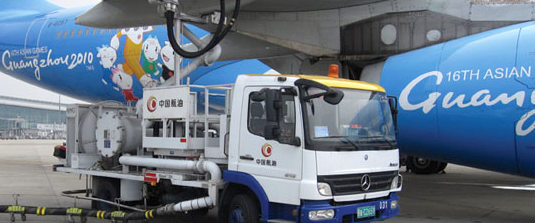Excerpts from RHB report
Analyst: Shekhar Jaiswal
♦ BUY, SGD1.60 TP offers 22% upside, 3% yield. Our revision of crude oil price forecasts has resulted in a c.2% adjustment in FY19-20F earnings.
We conservatively expect CAO’s near-term earnings to be driven by increasing jet fuel supply to China and more jet fuel being pumped by SPIA, which accounts for 65% of pre-tax profit.  CAO owns a 33% stake in SPIA, the sole supplier of jet fuel for the second largest airport in the PRC – Shanghai Pudong International Airport. CAO owns a 33% stake in SPIA, the sole supplier of jet fuel for the second largest airport in the PRC – Shanghai Pudong International Airport. Photo: CAO |
||||
♦ Revision to oil price outlook. In our recently-published regional oil & gas report titled REG Oil & Gas: Tensions Escalate, we trimmed 2019-2020 Brent crude oil price forecasts by c.3%.
This downgrade was in line with our expectation of a prolonged US-China trade war, leading to possibly lowerthan-expected global economic growth. We believe this will likely dampen global oil demand more than International Energy Agency’s (IEA) current estimate of 1.3mbpd additional demand for 2019.
♦ Still confident of earnings growth drivers. We remain confident of growth in China’s aviation passenger traffic over 2019-2021. To account for concerns relating to negative impact from the escalation of the US-China trade war, we are forecasting only mid-single digit jet fuel supply volume growth for China Aviation Oil (CAO) in 2019.
This compares with an average jet fuel supply volume growth of c.11% during last 10 years. The completion of capacity expansion at Shanghai Pudong International Airport (SPA) by end-2019 should also enable Shanghai Pudong International Airport Aviation Fuel Supply Company (SPIA, which is 33%-owned by CAO) to see higher-thanestimated jet fuel volume growth in 2020-2021.
| Large net cash balance |
|
|
♦ Reiterate BUY. Despite outperforming the STI by about 20% YTD, CAO’s stock continues to trade at a compelling ex-cash FY20 P/E of 4.3x.
This compares with an estimated FY20 earnings growth of 7.6%. The stock remains cheap vs regional and global peers (Figure 1).
♦ Key downside risks are lower-than-estimated jet fuel volume growth and opening up of the Chinese aviation fuel supply market, which would put an end to CAO’s current monopoly.
Full report here.






